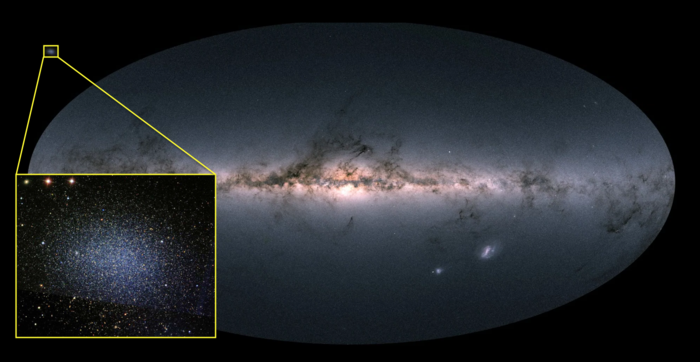Strangely massive black hole discovered in Milky Way satellite galaxy

University of Texas astronomers have discovered a black hole of massive size where it shouldn’t be present – in a satellite galaxy of our Milky Way.
The strangely massive black hole was discovered at the center of one of Milky Way’s dwarf satellite galaxies, called Leo I using the University of Texas at Austin’s McDonald Observatory. The black hole is said to be almost as massive as the black hole in our own galaxy. The work is published in a recent issue of The Astrophysical Journal.
The team decided to study Leo I because of its peculiarity. Unlike most dwarf galaxies orbiting the Milky Way, Leo I does not contain much dark matter. Researchers measured Leo I’s dark matter profile — that is, how the density of dark matter changes from the outer edges of the galaxy all the way into its center. They did this by measuring its gravitational pull on the stars: The faster the stars are moving, the more matter there is enclosed in their orbits. In particular, the team wanted to know whether dark matter density increases toward the galaxy’s center. They also wanted to know whether their profile measurement would match previous ones made using older telescope data combined with computer models.
For their observations, they used a unique instrument called VIRUS-W on McDonald Observatory’s 2.7-meter Harlan J. Smith Telescope. When the team fed their improved data and sophisticated models into a supercomputer at UT Austin’s Texas Advanced Computing Center, they got a startling result.
The researchers said the result was different from the past studies of Leo I due to a combination of better data and the supercomputer simulations. The central, dense region of the galaxy was mostly unexplored in previous studies, which concentrated on the velocities of individual stars. The current study showed that for those few velocities that were taken in the past, there was a bias toward low velocities. This, in turn, decreased the inferred amount of matter enclosed within their orbits.
The new data is concentrated in the central region and is unaffected by this bias. The amount of inferred matter enclosed within the stars’ orbits skyrocketed.




